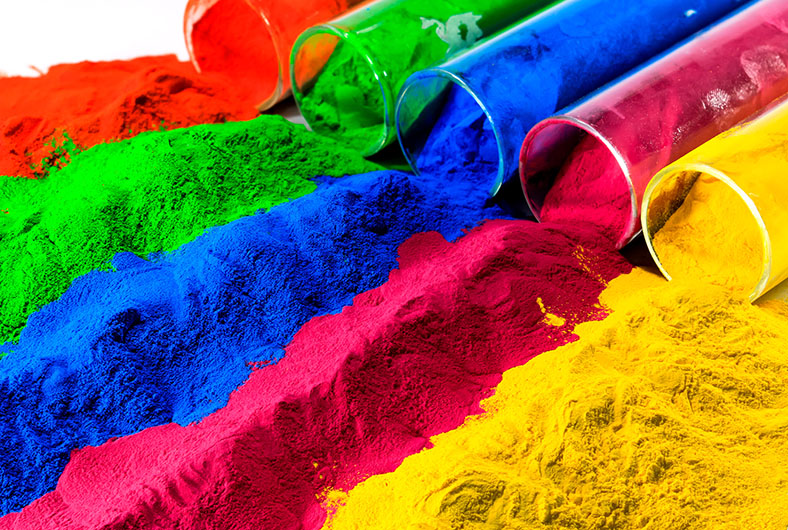More news
- Asian paint regulatory round up – Indonesian exterior paint still uses lead, warns W...
- Nigeria’s paint industry navigates regulatory changes and economic challenges amid p...
- Focus on the global coatings market: Global coatings market outlook
- Ask Joe Powder – October 2024
- Chinese paint majors look to domestic consumer sales as commercial real estate slumps

Clariant is committed to bringing solutions to market that improve the overall health and well-being of society. In line with that commitment, Clariant has developed Ceridust® 8170M; a PTFE-free alternative texturing agent for powder coatings that delivers performance without the negative aspects of PTFE.
The new Coatings Innovation Center in the Charlotte metro area is about addressing the challenges faced by North American formulators in the paints and coatings industry. Completed in late 2023, this new innovation centre was designed to enable Clariant to work collaboratively with its customers all along the value chain. It is equipped with state-of-the-art technology including a spray booth and accelerated weathering chambers. With this, Clariant is able to test every performance detail of new formulations from scrub, sag and leveling to colour acceptance. This new lab will also be able to support compliance with regulatory and sustainability specific requirements. In this way, Clariant is supporting customers with high-performing products and solutions that can accelerate their success and meet the changing needs of the market.
Powder coating without PTFE
We all know about the convenience of how nothing sticks to coated pans. In fact, this anti-adhesive material was not, as many assume, discovered in space research but is a substance called PTFE. PTFE was developed in 1938 by Dr. Roy Plunkett, an employee of the chemical company, DuPont. But still, it did find its way into space later – as insulation material for cables, such as in the Apollo missions.
PTFE’s unique properties have enabled its growth into many other areas, such as powder coatings. Thus, when it comes to decorating and protecting a window frame, a fence or a bike, a PTFE-containing powder coating was – up to now – the go-to-choice. PTFE can enhance the scratch resistance and slip performance or act as a texturising additive, providing powder coatings with the right consistency and stability for many applications.
However, there are increasing concerns about PTFE’s impact on human health & the environment, leading to the consequential legislative action to potentially restrict its use. This has resulted in a call for more eco-friendly and PTFE-free alternatives. Furthermore, if the restrictive policies of EU regulators prevail, PTFE-free solutions will soon become a significant business imperative.
READ MORE:
PPG completes US$2.7M expansion of powder coatings factory in Sumaré, Brazil
Best of both ideas – answering to the needs of the market
To address this challenge, Clariant has innovated a PTFE-free texturing agent: Ceridust 8170 M. Ceridust 8170 M combines two ideas that have, until now, only existed separately: the texturing qualities of PTFE and the environmental benefits of a PTFE-free alternative. Ceridust 8170 M has the added benefit of reduced energy consumption as part of the powder coating extrusion process. Furthermore, Ceridust 8170 M is compliant with the EU law REACH (Regulation on the registration, evaluation, authorisation and restriction of chemicals) and is not only PTFE- but also PFAS-free.
We are looking forward to providing this pioneering product to our customers in the powder coatings industry, whether for industrial coatings or in the building and construction area. When it comes to innovation, Ceridust 8170 M confirms our position as frontrunners for PTFE-free products. We understand the urgent need for change and are proud to be leading the way with PTFE-free solutions.
What PTFE means and what it is used for
PTFE, short for polytetrafluoroethylene, is a fluoropolymer within the PFAS group of chemicals. It is extremely nonpolar, with electrons evenly distributed along the polymer chain, giving it its distinct non-stick, high durable properties – much like those found in the well-known PTFE-coated pans but on the other hand results in the unpleasant property of being persistent in the environment. PFAS, on the other hand, stands for “per- and polyfluoroalkyl substances,” encompassing a vast group of chemical compounds present in hundreds of everyday products, ranging from waterproof clothing and coffee cups to, of course, pans.
The issue with PFAS lies in their persistence and their ability to endure in the environment for a very long time: their degradation can take up to 100 years. Additionally, some PFAS substances are known to be toxic and can be linked to various health concerns.







